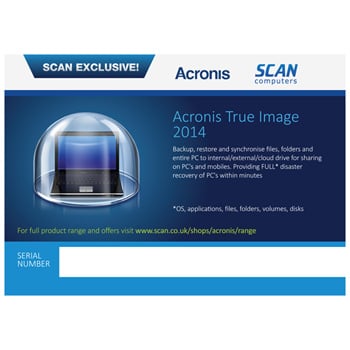

- #ACRONIS TRUE IMAGE 2014 RECOVERY FOR MAC#
- #ACRONIS TRUE IMAGE 2014 RECOVERY MAC OS#
- #ACRONIS TRUE IMAGE 2014 RECOVERY SERIAL NUMBER#
- #ACRONIS TRUE IMAGE 2014 RECOVERY FULL#
- #ACRONIS TRUE IMAGE 2014 RECOVERY LICENSE#
Folks with multiple Macs can purchase a 3 Mac license for $79.99. Once complete the process should be smooth. I didn't test the Acronis cloud storage, but given the upload speeds most Americans have it would take days, if not weeks, to perform the first backup.

A matter of taste mostly, but I prefer to know which drive we're talking about.

Overall, Acronis True Image is a polished backup application with a simple and clear interface. Recovery to the same location is probably easiest. This window then shows your choices:īut if you just want to recover a file you'll get a Finder-like window that looks like this: Once done you can then follow the normal Mac process - boot holding down the option key - to choose the backup volume. Once you have a complete backup, you can choose to create bootable rescue media on the backup drive.
#ACRONIS TRUE IMAGE 2014 RECOVERY FULL#
It also made the initial backup about 20 percent faster than a full rsync backup. When the backup completed, I could see that the True Image compression saved me about 20 percent of my capacity, which, given that I have a lot of compressed video, seems about right. Once the backup started I found I could work normally - writing, surfing, email - as the process used about half of my 2.0GHz dual-core I7 cycles. If there's an error - Acronis didn't like accessing my USB 3.0 drive through a hub - you get a clear message that the backup didn't happen. Once the backup starts there's a progress window that updates in real time.
#ACRONIS TRUE IMAGE 2014 RECOVERY SERIAL NUMBER#
dmg - disk image - file double-click to open drag the app to the Application folder alias open the Application folder and double-click on the Acronis True Image app enter the serial number (evals are available) and you get this window:Ĭlick on the destination icon and a pop-up shows available media, which includes internal drives (HDD, SSD, RAID), USB drives, FireWire drives, Thunderbolt, Network share, NAS, and Acronis Cloud.Ĭhoose a drive and the Start Backup button goes live. But there are some surprising limits on what True Image can back up: Macs using Bootcamp Fusion Drive or File Vault 2 aren't supported.įor mobile users the File Vault 2 requirement might be a deal killer, while iMac users could find the Fusion Drive limitation difficult.īut all in all, Acronis True Image's feature set is a worthy alternative to rsync-based Mac backup software. Oldest versions are deleted starting with the 11th backup. First is a full copy remaining copies are changes only.
#ACRONIS TRUE IMAGE 2014 RECOVERY FOR MAC#
So Acronis True Image for Mac has some tough competition. They're both solid packages that have served me well for years. I've bought and use both - SuperDuper! on a daily basis and CCC for partial syncs and for older versions of Mac OS. Two of the most popular rsync-based apps for Mac are SuperDuper and Carbon Copy Cloner. Handy if the system dies and you need to get back to work.
#ACRONIS TRUE IMAGE 2014 RECOVERY MAC OS#
On a Mac, you can take the rsync backup and restart on any Mac that supports the version of Mac OS you're using. Good for casual users, less so for professional users.

I stopped using Time Machine years ago because it's slow and a resource hog. The rise of big data and the demand for real-time information is putting more pressure than ever on enterprise storage.


 0 kommentar(er)
0 kommentar(er)
